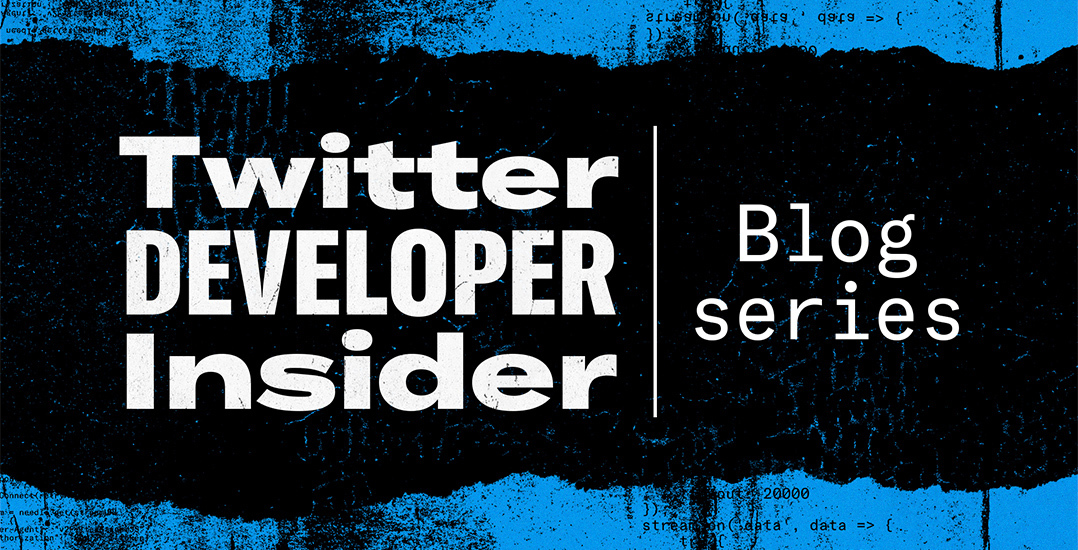Community
Hannah Kolbeck on Online Accessibility
By Francesca DeGiorgio, Developer Platform Marketing Intern
Hannah Kolbeck, Twitter Developer Insider
08 September 2022
By Francesca DeGiorgio, Developer Platform Marketing Intern
Hannah Kolbeck, Twitter Developer Insider
08 September 2022

This post is part of the Twitter Developer Platform’s Insider Blog Series. This series explores and highlights the innovations, creations, and contributions of the Twitter Developer Insiders, a group of passionate technologists who demonstrate outstanding leadership in advancing the Twitter API and a #buildwhatsnext mentality. Visit us here to learn more about the Insiders program and how to apply to become an Insider yourself.
The Twitter Developer Insiders have contributed immensely to the Twitter community, improving the Twitter experience for everyone. Hannah Kolbeck is one such Insider whose dedication to the public good and accessibility has helped make Twitter a more inclusive and welcoming space. Hannah is a software developer who lives in Portland, Oregon and works primarily with backend API and data processing. She got into Javascript in order to write bots for Twitter, including her alt text reminder bot, a bot that automatically sends a friendly direct message reminder when someone has Tweeted an image without alt text.
Hannah counts this bot as one of her favorite projects she has worked on as a developer. Working primarily in a backend role meant the work she was doing was impacting only other developers, but working on the alt text reminder bot as well as her other accessibility projects has given her a powerful look into how her technical knowledge was able to impact the lives of many non-technical people.
To Hannah, accessibility is crucial to her values. She believes it necessary to expend effort to include as many people as possible in a conversation, whether this conversation is in person or online. Online inclusivity can sometimes feel like a politeness rather than a necessity, she says, but that same effort should still be expended even in an online space. For Hannah, this effort takes the shape of projects like the alt text reminder bot, which came into being after Hannah decided she wanted a tool that would automatically remind her when an image she had posted didn’t have alt text so she could delete it and repost. While other similar tools existed at the time, their reminders were both relatively slow and also public, generally taking the form of a reply to a Tweet.
Hannah got to work creating her own alt text reminder bot, one that wouldn’t publicly reply to Tweets and would instead utilize private reminders in Direct Messages, and one that could do so immediately, so the person who posted could quickly delete and repost their Tweet with alt text. Hannah then built the alt text reminder bot with the Twitter API, and has continued to build it for a larger user base ever since.
The power of the Twitter API has helped Hannah make Twitter a more accessible and inclusive space for all people on the platform. She describes how having such easy access to a huge data stream has enabled some very powerful use cases. As an example, she cited Twitter’s advanced language recognition program, and how this has enabled her to program the alt text reminder bot to send its reminders in localized languages. With the help of the Twitter API, Hannah can accomplish her goal of improving accessibility on Twitter, and can include as many people as possible in the public conversation.
The success of the alt text reminder bot has encouraged Twitter to prioritize releasing its own similar feature: an automatic reminder to make an image accessible before someone Tweets out an image without alt text. Hannah says she’s happy her tool is becoming obsolete due to this feature; with the new feature built into the platform itself, the reminders will show up before people actually Tweet–– meaning more people on Twitter can include alt text without having to Tweet and delete. Hannah hopes that the work she does continues to encourage Twitter to build accessibility tools into the platform.
What’s next for Hannah? She’s currently working on an alt text library that can help automatically assign alt text to an image. She says that more people are starting to think about incorporating alt text on Twitter, but not everyone, and she hopes a tool like this will help fill in those gaps. You can follow the project on Twitter here. She’s also working on what she calls a distant sibling of the alt text reminder bot: an optical character recognition tool that can read text in images and incorporate that into alt text.
With the Twitter API in the hands of talented and passionate developers like Hannah who are building tools for the public good and accessibility, Twitter can become a better, safer, and more inclusive place for everyone.